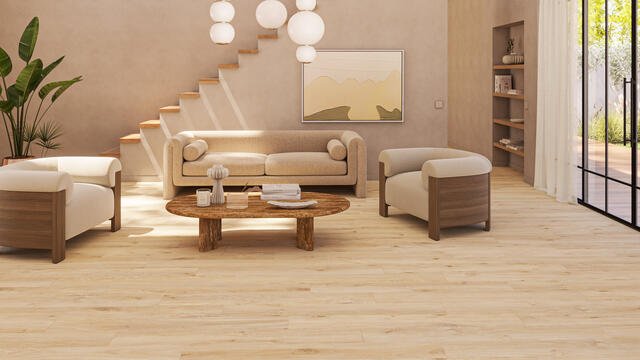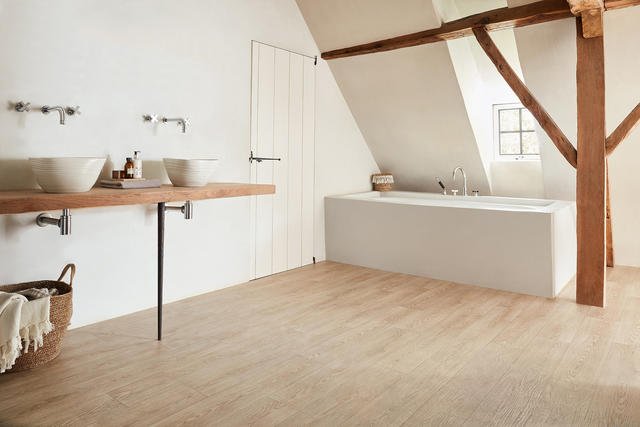
Hey there, if you’re knee-deep in a home makeover or just tired of staring at those worn-out floors, you’ve probably stumbled across the big debate: laminate versus luxury vinyl plank, or LVP as folks call it. Both promise that sleek, modern look without breaking the bank, but which one really fits your wallet and lifestyle? We’re diving into this head-to-head to help you figure it out. Think about it – your floors take a beating every day from kids, pets, spills, and whatever else life throws at ’em. So, let’s break down the costs, durability, and all the nitty-gritty details to see what’s best for your budget.
What Makes Laminate Flooring Tick?

Laminate flooring’s been a go-to for years, and for good reason. It’s basically a multi-layer sandwich: a tough wear-resistant top layer often made with aluminum oxide or melamine to fend off scratches, a decorative paper that mimics wood or stone patterns, a core of medium or high-density fiberboard for stability, and a backing layer to keep things balanced and moisture-resistant. Thickness-wise, you’re looking at options from 6mm up to 12mm, which affects how solid it feels underfoot.
One thing I love about laminate? It’s got that real-wood vibe without the hefty price tag of hardwood. Imagine walking into your living room and seeing oak or walnut grains that look straight from nature – that’s the decorative layer working its magic. But here’s a heads-up: while it’s touted as 100% waterproof these days, older versions could swell if water sat too long. Modern ones hold up better, but they’re not invincible in super-wet spots like a steamy bathroom.
Durability’s solid with abrasion classes from AC1 to AC5 – higher numbers mean it can handle more traffic, like in a busy family home. Maintenance? Wipe it down with a damp cloth, no fancy cleaners needed. Just avoid soaking it. I’ve chatted with folks who’ve had laminate for a decade, and it still looks sharp, though heavy furniture might leave dents if you’re not careful with pads.
Diving into Luxury Vinyl Plank (LVP)
Now, flip the script to LVP, which often goes by SPC flooring in some circles – that’s stone plastic composite for the core, blending PVC and calcium powder. It’s got layers too: a UV coating for stain resistance, a wear layer (0.2mm to 0.7mm thick) that takes the daily grind, a printed decor film for those wood or stone looks, the rigid SPC core for backbone, and sometimes a foam backing like IXPE for cushion and sound dampening.
What sets LVP apart? It’s a beast when it comes to water. 100% waterproof, no ifs or buts – perfect for kitchens where spills happen or basements prone to dampness. It’s also got killer scratch resistance and can bounce back from impacts, earning nicknames like "soft gold" in the industry. Anti-slip features make it safe, especially if you’ve got little ones or elderly folks around. And get this: it’s fire-retardant, self-extinguishing in seconds without toxic fumes.
Thickness runs 4mm to 6.5mm, and installation’s a breeze with click-lock systems – no glue, just snap ’em together over most subfloors. I’ve seen DIYers tackle a whole room in a weekend. Maintenance is even easier; a quick swipe handles dirt, and it’s resistant to acids or alkalis, so no worries about household cleaners.
Speaking of which, ever had that moment where you drop a pot in the kitchen and cringe? LVP shrugs it off better than most.
Breaking Down the Costs: Where Your Money Goes
Budget’s the name of the game here in our laminate vs. luxury vinyl plank showdown. Let’s get real with some numbers – though prices fluctuate based on quality and region, expect laminate to start around $1 to $3 per square foot for basic stuff, jumping to $4 or more for premium with better wear layers. Installation? If you’re hiring pros, add $1-2 per foot, but DIY keeps it low since it’s floating.
LVP tends to edge higher, say $2 to $5 per square foot, thanks to that rigid core and waterproof perks. But here’s the kicker: over time, LVP might save you cash on repairs because it handles moisture without warping. Laminate could need replacing sooner in high-humidity areas.
Aspect Laminate Flooring Luxury Vinyl Plank (LVP)
Material Cost (per sq ft) $1-4 $2-5
Installation Cost (pro) $1-2 per sq ft $1-2 per sq ft
Long-Term Savings Good if dry environment; potential swelling fixes add up Excellent; waterproof reduces replacements
Lifespan Estimate 10-20 years with care 15-25 years, often longer in tough spots
Don’t forget underlayment – both might need it for soundproofing, but LVP’s built-in foam can cut that extra buy. Oh, and if you’re pinching pennies, laminate wins upfront, but factor in your home’s humidity. I once helped a buddy redo his basement after cheap laminate buckled – lesson learned.
Durability Showdown: Who Lasts Longer?

Both are tough cookies, but they shine in different arenas. Laminate’s wear layer fights scratches well, especially in AC4 or AC5 grades for heavy foot traffic. It’s impact-resistant to a point, but drop something heavy? Dents happen. Moisture? Improved, but not foolproof – think about that leaky fridge.
LVP cranks it up with high-density cores that resist indentations and recover from blows. Waterproof from top to bottom, it laughs at spills, mildew, or even floods. Scratch-wise, it’s superior, and that anti-bacterial surface keeps things hygienic. Data from industry tests shows LVP holding up 20-30% better in wet simulations.
Laminate Pros: Affordable durability for dry rooms; easy to clean.
Laminate Cons: Can chip at edges; noisier footsteps without underlay.
LVP Pros: Bounces back from impacts; quiet and comfy.
LVP Cons: Might feel less "woody" if that’s your jam.
In my experience, for a house with dogs? LVP all the way – claws don’t dig in as much.
Ease of Installation: DIY or Call the Pros?
Nobody wants a flooring project dragging on forever. Both use click-lock systems – Unilin or similar – so you float ’em over subfloors without nails or glue. Laminate snaps together quick, but watch for uneven bases; it needs a flat surface or it’ll creak.
LVP’s forgiving, fitting over concrete, tile, or old floors, even if slightly imperfect. That rigid core means less prep work. Time-wise, a 200 sq ft room? Maybe 4-6 hours for either if you’re handy.
Pro tip: Always acclimate the planks to room temp for a day. Skipped that once on a laminate job, and gaps appeared come winter. Yikes.
Aesthetic Choices: Style That Fits Your Home
Looks matter, right? Laminate nails the natural wood grains – oak, maple, you name it – with textures that feel authentic. Patterns galore, from rustic to modern.
LVP steps up with wood, stone, even herringbone designs. The printed film allows crazy customization, like marble veins without the cold feet. Both come in planks or tiles, but LVP’s seamless splicing hides joints better.
Want a cozy cabin feel? Laminate. Sleek urban loft? LVP’s versatility wins. And hey, both evolve with trends – I’ve spotted parquet revivals in LVP that turn heads.
Environmental Factors: Going Green on a Budget
Eco-conscious? Laminate uses fiberboard from recycled wood, often hitting E0 formaldehyde standards – no nasty emissions. It’s recyclable too.
LVP’s PVC-based but 100% virgin materials mean no phthalates or heavy metals. Fire-retardant without toxins, and some are fully recyclable. Both protect forests by mimicking wood.
But LVP edges out in sustainability for wet areas, reducing waste from moisture damage. Industry stats show flooring waste hits millions of tons yearly – choosing durable cuts that.
When to Choose Which: Real-Life Scenarios
For a budget kitchen remodel? LVP’s waterproofing seals the deal. Busy hallway in a dry climate? Laminate saves bucks.
High-traffic office? LVP’s soundproofing quiets things. Cozy bedroom? Laminate’s warmth feels right.
Picture this: A family with toddlers and a splashy bath time – LVP prevents headaches. Or a rental flip on a shoestring? Laminate transforms quick and cheap.
Meet Lanhe Flooring: Your Go-To Laminate Supplier
Before we wrap up, a quick shoutout to Lanhe Flooring. As a seasoned laminate flooring supplier, they’ve got years under their belt crafting high-quality options that blend style and toughness. Based in Shandong, China, they export worldwide, from North America to Europe, with a focus on eco-friendly materials and custom designs. Their laminate stands out for its precise layering and wear resistance, all while keeping things affordable. If you’re eyeing laminate, Lanhe’s commitment to quality control – from raw materials to final packing – means you’re getting floors that last without the fuss.
Conclusion
So, wrapping this up, the laminate vs. luxury vinyl plank debate boils down to your space, needs, and yes, that budget. Laminate shines for dry, high-style areas on a tight wallet, while LVP pulls ahead in durability and wet-zone reliability, potentially saving more long-term. Weigh your home’s quirks – traffic, moisture, vibe – and you’ll land on the winner. Either way, smart flooring upgrades your daily life without emptying your pockets.
FAQs
Is laminate or luxury vinyl plank better for a tight budget in a humid bathroom?
When pitting laminate vs. luxury vinyl plank (LVP) for your budget, LVP takes the crown in humid spots. It’s fully waterproof, resisting swells or warps that could hit laminate harder, keeping repair costs low over time.
How do maintenance needs compare in the laminate vs. luxury vinyl plank matchup?
Both are low-fuss, but LVP edges out with its seamless, mildew-proof surface – just a wipe does it. Laminate needs careful mopping to avoid moisture seep, making LVP the easier pick for busy households on a budget.
Can I install either flooring myself to save money?
Absolutely, in the laminate vs. luxury vinyl plank debate, both snap together with click-locks for DIY ease. Laminate might need a flatter subfloor, but LVP’s rigid core forgives minor bumps, cutting pro fees and fitting tight budgets.
Which offers more design variety without blowing the budget?
Laminate vs. luxury vinyl plank? LVP often wins with endless patterns like herringbone or stone, mimicking luxury at mid-range prices. Laminate’s wood grains are classic and cheap, but LVP gives that extra flair for value.
Does environmental impact factor into choosing laminate vs. luxury vinyl plank on a budget?
Yes, both are eco-friendly options. Laminate uses recycled wood fibers with low emissions, while LVP avoids toxins and lasts longer, reducing waste – great for budget-minded green thumbs.


